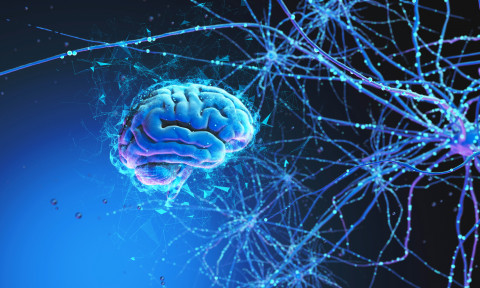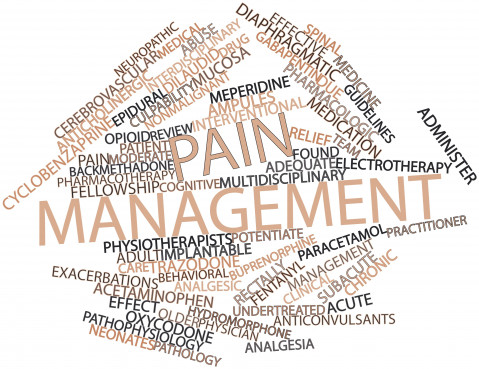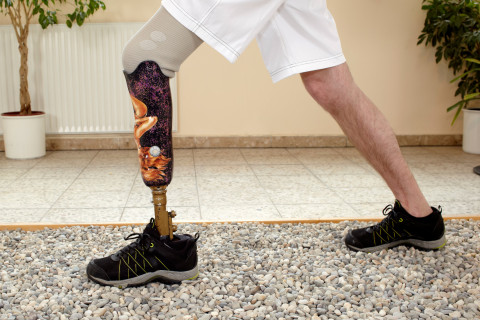
In today's world where we have become so plagued by disease/pain, one may ask "why?" We may recall Newton's 3rd Law of Motion, from our days of studying physics, "Every Action has an equal and opposite Reaction". Keep this in mind, as you read on.
Motion is all around us as well as within us, down to the tiniest cells in our bodies. While this movement is good for our health, infections, trauma (emotional/physical), surgeries, repetitive movements, (poor) nutrition, environmental toxins, and stress will inflict a reaction in our bodies. Though we as human beings are resilient, how we respond to these forces varies and in turn, can affect and create imbalance and disharmony in our lives, relationships, bodies etc. Our bodies are amazing historians that impact our lives throughout time. In my point of view as a physiotherapist, this disrupts healthy movement at a micro and macro level.
Physically speaking, any of the above mentioned factors may cause organs, tissue, or bone to lose their "normal movement". Invariably, this manifests as pain (either locally or elsewhere,) or dysfunction of some sort i.e., incontinence, inability to bend, digestive issues etc. The right therapist can help root out these issue, whether it be relaxing your nervous system to release tensions in the fascial system through manual techniques and visceral mobilizations, or educating a client on tools outside of hands-on-therapy.It is important to find out what the cause is. Each one of us has an individual story that needs to be heard to appropriately facilitate the body to heal from the inside-out and to find health, and to find balance.
What Is Pain?
Educating ourselves about pain has shown to be valuable in restoring function and living a better quality of life. Pain lasting greater than 12-16 weeks, is progressing from acute/subacute pain to chronic/persistent pain. It is understanding what threat level our brain is perceiving that will be a strong indicator of quality of life and function.
The Definition of Pain was recently revised by the International Association for the Study of Pain. Pain is defined as "An unpleasant sensory and emotional experience associated with, or resembling that associated with, actual or potential tissue damage." It is 100% of the time determined by the brain.
Pain is a complex, yet normal human experience. The way our body receives information whether it be emotional or physical, will begin to imprint on our complex network of neural patterns. This response can become heightened depending on the many "influencers" that may trigger the body's output of pain.

How Pain and The Brain Works
 Phantom Limb Pain has been studied to better understand persistent pain. On MRI and PET scans of the brain, when a patient feels phantom pain post amputation, scans show an increased activity of the brain. These highlighted parts of the brain once communicated with the nerves connected to the amputated limb. One theory surrounding phantom pain is that prior to the amputation the brain and central nervous system may have created a lasting imprint surrounding that experience, or what is called a "neurotag" (Butler, Moseley). A network of neurons when activated together around a certain experience will attach a specific "neurotag" to that experience; hence, our brain is continually creating neurotags that are dynamic and changing.
Phantom Limb Pain has been studied to better understand persistent pain. On MRI and PET scans of the brain, when a patient feels phantom pain post amputation, scans show an increased activity of the brain. These highlighted parts of the brain once communicated with the nerves connected to the amputated limb. One theory surrounding phantom pain is that prior to the amputation the brain and central nervous system may have created a lasting imprint surrounding that experience, or what is called a "neurotag" (Butler, Moseley). A network of neurons when activated together around a certain experience will attach a specific "neurotag" to that experience; hence, our brain is continually creating neurotags that are dynamic and changing.
Information continues to be processed in our brain as inputs into the network of neurons called the "neuromatrix". Despite the absence of a limb, the neural network is sending a message to the brain that "something is not right" and the brain creates an ouput that can be pain, burning, pins and needles. The longer the pain neurotag is present the better the body is at protecting itself. Over time, pain can be present even in the absence of stimuli-hence in this case deemed "phantom limb pain"-A painful limb experienced by the patient despite the absence of a limb.
Persistent Pain - "Real" or "Not Real"
Do you ever feel that people do not believe your pain is real? Have you seen multiple specialists who have told you that they cannot do much more for you? We as healthcare professionals need to do more to understand treatment for your symptoms. Your pain is REAL. It does, however, have many "influencers" that may create a sensitive nervous system over time. When you have been living with pain greater than 3-6 months, you start to have changes in your brain that create maladaptive behaviours to "protect" you from pain sometimes even in the absence of stimuli. Overtime, this will increase your body's sensitivity to pain. What were once non-threatening, non-pain provoking stimuli can now trigger painful responses over time. Couple a stressful life event at the same time of the physical event, and the body would not be able to disassociate the two.
What Is Central Sensitization?
A highly sensitized nervous system can create symptoms such as hypersensitivity or allodynia which is defined as "pain due to a stimulus that does not normally provoke pain". An example of this would be when the weight of a feather produces a painful sensation. It may also create an overprotective system, causing you to avoid movement due to pain, and fear-avoidance-type behaviours. One can also start to feel like the pain is starting to spread to different areas of the body. Click HERE to better understand Corticol Smudging.
Take the opportunity to do a self assessment to determine if you are experiencing a sensitized nervous system.
How Physiotherapy Can Help
You may benefit from seeing a Physiotherapist who addresses a series of questionnaires using an approach that will look at your persistent pain using a bio-psychosocial approach. We can do this by going beyond the physical examination and looking at questionnaires that assess, emotions, stress, nutrition, your belief system, fear of movement and deduce what has created maladaptive behaviours.With proper guidance the evidence informed components of treatment are simple everyday practice, broken down tactically working with your physiotherapist. Five pillars to live by daily:
- Good Nutrition
- Exercise - using a graded exposure approach to exercise sub-threat of pain or Fear
- Create a Relaxation Response in your everyday
- Believe you can be well
- Strong sense of Community and Positive Social connections
Persistent Pain is a multifactorial issue that can be broken down to achieve one simple goal- improved function.Understanding Pain is the first step to achieving this goal.
Recommended Videos
Tame the Beast
The Pain Truth and Nothing But
Resources
Carolyn Van Dyken, Biopsychosocial Reframed, Reframe Rehab
Butler,D.S. &Moseley, G. L. Explain Pain 2nd Edition, Noigroup Publications.2013
Louw, A., & Puentedura, E.J. Therapeutic Neuroscience Education, Pain, Physiotherapy and the Pain Neuromatrix. International Journal of Health Sciences, September 2014;2(3):33-45
